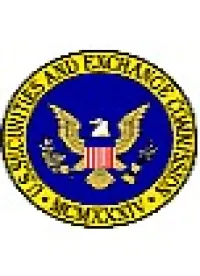Last year, the Securities Exchange Commission (SEC) adopted Rule 506(c) of the Securities Act of 1933 (Securities Act), which, in a major departure from prior securities practice, allowed the use of general solicitation and general advertising (referred to throughout this alert as general solicitation) in connection with unregistered offers and sales of securities; though it must be noted the SEC was compelled to take this step by legislative mandate. The new rule imposed three conditions to the application of the exemption: (1) the purchasers had to be accredited investors; (2) the issuer had to take “reasonable steps” to verify the accredited investor status of the purchasers; and (3) the terms of Securities Act Rules 501, 502(a) and 502(d) had to be observed. We discussed Rule 506(c) in a previous client alert.1
In a recent speech to the 2014 Angel Capital Association Summit, the Director of the SEC’s Division of Corporation Finance, Keith Higgins, remarked that “one wonders why the new Rule 506(c) exemption has not caught on more widely with issuers who have long clamored for the general solicitation ban to be lifted.”2 Although from September 2013, when Rule 506(c) became available, to March 2014, the SEC saw “almost 900 new offerings conducted in reliance on the exemption, raising more than $10 billion in new capital,” issuers still preferred to use “the old ’private’ Rule 506 exemption (now called Rule 506(b)),” which, “during the same time period, was relied upon in over 9,200 new offerings that resulted in the sale of over $233 billion in securities.”3 He observed that some believe that issuers have shied away from the new Rule 506(c) exemption because of the requirement to take “reasonable steps to verify” accredited investor status. Expressing surprise that flexibility in verification approaches countenanced by the rule – which allowed a principles-based approach and provided specified methods for verification as safe harbor alternatives – did not find favor with issuers, he noted that the staff of the SEC’s Division of Corporation Finance (Staff) would not be receptive to entreaties to “provide guidance – presumably on a case-by-case basis – confirming that a specified principles-based verification method constitutes ‘reasonable steps’ for purposes of the rule’s requirement” because the “notion of the [S]taff reviewing and approving specific verification methods seems somewhat contrary to the very purpose of a principles-based rule” and because he remained unconvinced of the need for such Staff involvement.4
However, such entreaties have had some effect, for the Staff recently issued guidance related to (1) the “reasonable steps” safe harbors for verifying accredited investor status under Rule 506(c)5 and (2) the accredited investor definition in Regulation D.6This guidance is further evidence that the Staff should be expected to issue ongoing interpretive guidance on Rule 506(c) as issuers continue to grapple with the rule’s requirements.7
The guidance illustrates that the Staff narrowly construes the Rule 506(c) accredited investor verification safe harbors. However, even where a safe harbor is not available, the guidance makes clear that issuers can satisfy the verification requirement under the principles-based verification method. However, under that approach issuers must consider all relevant facts and circumstances and additional verification steps may be necessary where reasonable doubt remains about a purchaser’s accredited investor status.
This client alert briefly summarizes the Staff’s guidance, which will be of interest to public and private companies and investment funds that seek to rely on Rule 506 for securities offerings, especially those issuers seeking to use general solicitation under Rule 506(c).
Rule 506(c) Accredited Investor Verification Safe Harbors
Background. Rule 506(c)(2)(ii) sets forth non-exclusive and non-mandatory accredited investor verification methods that, if satisfied, serve as safe harbors for issuers who will be deemed to have satisfied the “reasonable steps” verification requirement. The safe harbor verification methods include, among others:
-
when verifying a purchaser under the accredited investor annual income test, reviewing any Internal Revenue Service (IRS) form reporting a purchaser’s income for the two most recent fiscal years and obtaining a written purchaser representation that he or she has a reasonable expectation of reaching the required income level during the current year (Rule 506(c)(2)(ii)(A)); and
-
when verifying a purchaser under the accredited investor net worth test, reviewing specified documentation evidencing the purchaser’s assets and liabilities8 dated within the prior three months and obtaining a written purchaser representation that all liabilities necessary to make a determination of net worth have been disclosed (Rule 506(c)(2)(ii)(B)).
As what constitutes “reasonable steps” is a principles-based determination, an issuer that does not satisfy any of the verification safe harbors can still satisfy the reasonable steps requirement using other verification methods.9
The Rule 506(c)(2)(ii)(A) safe harbor is not available where IRS forms for the most recently completed year are not yet available (for example, the purchaser's 2014 IRS forms in an early 2015 offering). However, the Staff believes that an issuer could, under the principles-based verification method, satisfy the verification requirement by:
-
reviewing IRS forms that report income for the two years preceding the most recently completed year (in our example, 2013 and 2012); and
-
obtaining written purchaser representations that (i) an IRS form reporting the purchaser's income for the most recently completed year is unavailable, (ii) specify the purchaser’s income for the most recently completed year and that such amount satisfies the required accredited investor income level, and (iii) he or she has a reasonable expectation of satisfying the requisite income level for the current year.
The Rule 506(c)(2)(ii)(A) safe harbor is not available for a non-U.S. taxpayer.However, the Staff believes that an issuer could, under the principles-based verification method, satisfy the verification requirement by reviewing a purchaser’s filed foreign tax forms that report income where the foreign jurisdiction imposes penalties for falsely reported information comparable to the penalties imposed by the IRS.
The Rule 506(c)(2)(ii)(B) safe harbor is not available where an issuer reviews the most recent tax assessment that is available but that is not dated within the prior three months. However, the Staff believes that an issuer could, under the principles-based verification method, satisfy the verification requirement if it uses the most recently available tax assessment when determining whether the purchaser satisfies the net worth test. For example, if the most recent tax assessment shows a value that, after deducting liabilities, the purchaser’s net worth substantially exceeds $1 million, it may be sufficient verification that the purchaser has satisfied the net worth test.
The Rule 506(c)(2)(ii)(B) safe harbor is not available where an issuer reviews a consumer report from a non-U.S. consumer reporting agency. However, the Staff believes that an issuer could, under the principles-based verification method, satisfy the verification requirement by reviewing a consumer report from a non-U.S. consumer reporting agency that performs similar functions as a U.S. nationwide consumer reporting agency and taking any other steps necessary to determine the purchaser's liabilities (such as a written purchaser representation that all liabilities have been disclosed).
Where reason for doubt exists, an issuer must take additional verification steps under the principles-based verification method. The Staff provides a cautionary reminder that, unlike under the verification safe harbors, where an issuer relies on the principles-based verification method and has reasonable doubt about a prospective purchaser’s accredited investor status after completing the diligence associated with its verification method, “it must take additional verification measures in order to establish that it has taken reasonable steps to verify that the purchaser is an accredited investor.” For example, if, in the Staff’s example above of an acceptable principles-based verification method based on a review of IRS forms and the purchaser’s representations, a purchaser's income for the most recently completed year barely exceeds the threshold income requirement, the specified procedures may not satisfy the verification requirement and more diligence may be necessary.
Accredited Investor Definition
To qualify as an accredited investor, a purchaser must be one of the specified persons or entities set forth in Securities Act Rule 501(a). Purchasers that are natural persons typically qualify under the net worth test10 or the annual income test.11
Under the net worth test, an issuer may include a purchaser’s assets in an account or property held jointly with a person who is not the purchaser's spouse. However, such assets may only be included in the net worth calculation to the extent of the purchaser’s percentage ownership of the account or property.
Where a purchaser’s income is not reported in U.S. dollars, issuers have a choice in the exchange rate they may use to determine if the annual income test is satisfied. Issuers may use either (1) the exchange rate in effect on the last day of the year for which income is being determined or (2) the average exchange rate for that year.
We note that Director Higgins has indicated that this “may be an opportune time for a thorough reexamination of [the accredited investor] definition. After all, it was the condition that only accredited investors would be permitted to purchase the securities offered through a general solicitation that gave many members of Congress the comfort needed to support the elimination of the decades-old ban. …Under the 2010 Dodd-Frank Act, the [SEC] is required to undertake a review of this part of the accredited investor definition four years after the enactment of the Act. The [S]taff is currently conducting this review, which will help inform the [SEC]’s consideration of whether or not to change the definition.”12 Issuers and their advisors can thus expect more guidance, if not more rulemaking, as to the accredited investor definition. Stay tuned.
1. Please see our client alert dated July 22, 2013, General Solicitation Permitted in Certain Rule 506 and Rule 144A Offerings; “Bad Actors” Disqualified from Rule 506 Offerings; Other Significant Amendments Proposed to Regulation D.
2. Keith F. Higgins, Director, SEC Div. of Corp. Fin., Keynote Address at the 2014 Angel Capital Association Summit (Mar. 28, 2014).
3. Id.
4. See id.
5. See SEC Div. of Corp. Fin., Securities Act Rules Compliance and Disclosure Interpretations (C&DIs), Questions 260.35 – 260.38 (Jul. 3, 2014).
6.See SEC Div. of Corp. Fin., Securities Act Rules C&DIs, Questions 255.48 & 255.49 (Jul. 3, 2014).
7. Please see our client alert dated December 20, 2013, SEC Issues Guidance on General Solicitation and Rule 506 Bad Actor Rules.
8. For assets, an issuer must review one or more of the purchaser’s bank statements, brokerage statements and other statements of securities holdings, certificates of deposit, tax assessments or appraisal reports issued by independent third parties. For liabilities, an issuer must review a consumer report from at least one of the nationwide consumer reporting agencies.
9. In this regard, we note that in his address to the 2014 Angel Capital Association Summit, Director Higgins stated that the principles-based approach allowed “issuers and other market participants [to] have the flexibility to think about innovative approaches for complying with the verification requirement of the rule and use the methods that best suit their needs. While the [S]taff may not be in a position at this point to provide guidance on what constitutes ‘reasonable steps’ under particular circumstances, I also believe the [S]taff will not be quick to second guess decisions that issuers and their advisers make in good faith that appear to be reasonable under the circumstances.” Higgins, supra note 2.
10. Under the net worth test, a purchaser must have an individual net worth, or joint net worth with his or her spouse, of over $1 million, excluding the value of the purchaser’s primary residence.
11. Under the annual income test, a purchaser must have (1) in each of the two most recent years, individual income of over $200,000 or joint income with his or her spouse of over $300,000 and (2) a reasonable expectation of reaching the same income level in the current year.
12. Higgins, supra note 2.






 />i
/>i

